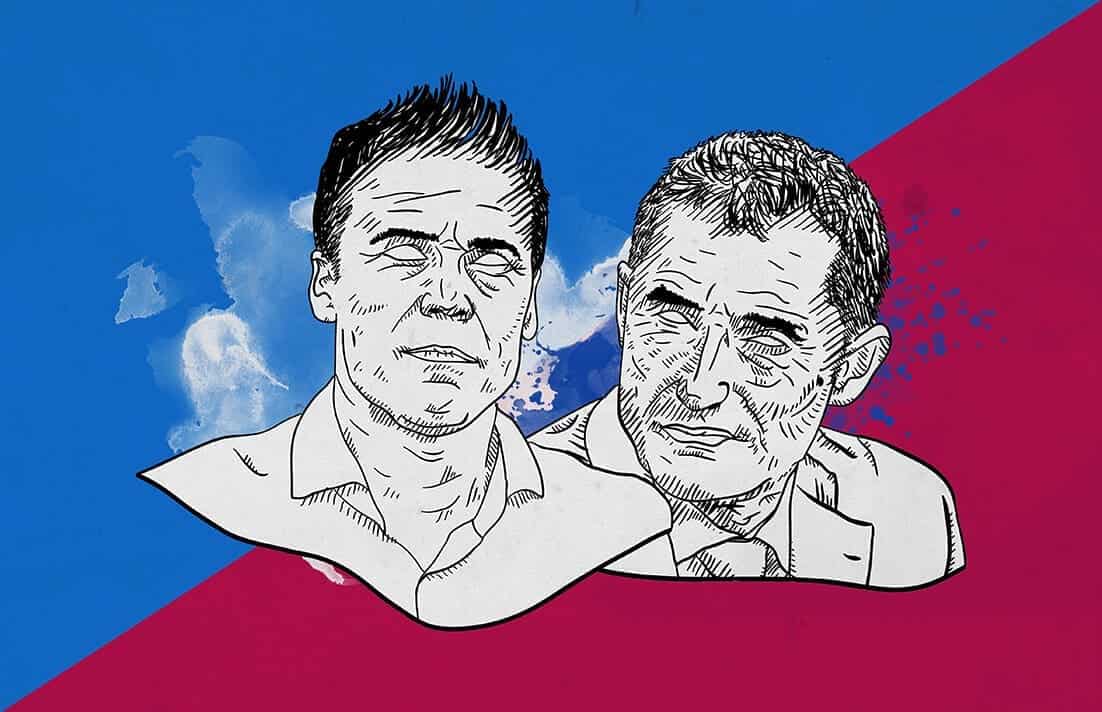Barcelona travelled across town to the home of Catalan rivals RCD Espanyol for the latest edition of the Catalan derby. Barcelona have been dominant in this fixture in the past as Espanyol have not won against their more illustrious neighbours since 2009. However, with the strides made by the team under new coach Rubi and Barcelona’s stuttering form so far this season, there was reason for hope amongst the Espanyol fans that this could be when they would upset their neighbours. In the event, they were blown away by a ruthless Barcelona performance and the brilliance of Lionel Messi and they will have to wait till next time.
With Luis Suarez’s return from injury, Barcelona coach Ernesto Valverde moved away from the false nine system that he has implemented in recent games and moved Lionel Messi back out to the right of the attacking trident with Dembele moving over to the left and Coutinho dropping to the bench. Arturo Vidal kept his place in the team due to the absence of Arthur Melo.
LINEUPS:
BARCELONA BREAK THROUGH ESPANYOL PRESS:
Barcelona set up with their traditional 4–3–3 formation with a lot of wrinkles in the system. During the early phases of their build-up, Espanyol would alternate between a 4–4–2 and a 4–5–1 system with Borja Iglesias given man-marking duties on Barcelona pivot Sergio Busquets, the goal was to remove Busquets from having his usual influence on Barcelona’s build up and try and direct Barcelona’s build-up wide very early.
To counteract this, Rakitic would make Kroos-esque movements to drop deeper in the left half space while Busquets would simultaneously move higher up the pitch thereby taking Iglesias with him and increasing the amount of space available to Rakitic. Sometimes, when possession was not yet stable one of either Messi or Vidal, usually the former, would drop into midfield and increase the numbers there. These movements made it difficult for Espanyol’s midfield block to cope as they were usually complemented by vertical runs by one of Suarez, Vidal or Dembele so they couldn’t step up and apply pressure on the ball carrier, this coupled the press resistance of the Barcelona players allowed La Blaugrana to dominate proceedings for pretty much the entire game.
Espanyol pressed in a midfield block and generally refrained from challenging the Barcelona centre-backs when they had possession of the ball, as earlier stated, their shape alternated between a 4–5–1 and a 4–4–2 depending on the positioning of Iglesias’ strike partner, Melendo.
In the early stages of the game, it was a clear 4–4–2 but as the game progressed, they shifted more to a 4–5–1 as Oscar Melendo moved more into midfield to give them more horizontal compactness. Espanyol did do well to try and box Barcelona in against the touchline but even here Barcelona were able to break out on a number of occasions using certain combination patterns.
When they couldn’t immediately access the final third of the pitch from the midfield and found themselves pushed towards the touchline, as the Espanyol block compressed towards the left-hand side, Suarez would drop into the left half space while Dembele would threaten with runs into depth, still on the left touchline and Semedo would keep the width on the right. In such situations, Jordi Alba would play a diagonal pass into the feet of Suarez and the Uruguayan would immediately play the switch to the right back Semedo who would find then himself in acres of space.
Barcelona had different interactions on the right and the left-hand sides of the pitch; on the right, with Messi showing his usual propensity to invert into midfield, Vidal complemented his dropping movements by moving higher to occupy the Espanyol defenders thereby making sure that he could not be followed into midfield, then Semedo would make a relatively late run to attack the touchline out wide on the right usually after Messi has attracted a number of Espanyol players towards him. On the left, Dembele concentrated mostly on attacking the fullback directly in 1 vs 1 situations. The wrinkle was that unlike on the right, the central midfielder Rakitic didn’t move higher but instead dropped deeper to aid in the build-up and Alba also was a bit more conservative as he usually stayed in rest defence to guard against counter attacks with his pace.

These interactions had a direct effect on how Barcelona created chances whenever they were able to move into the final third. As per usual, Messi was the focal point of Barcelona’s attacking actions and they sought to create chances primarily through his diagonal actions. Without Alba making his usual overlapping runs, Messi’s main outlet on the left was Ousmane Dembele who would then go up against the fullback.
COUNTERPRESSING AND COUNTER ATTACKING:
Espanyol set up their game plan knowing that they would probably have less of the possession against Barcelona and so decided to come up with a counter-attacking plan to try and even the odds. The goal was to try and invite Barcelona into their compact midfield structure and then win the ball back and counter-attack with the pace of their wingers. In the early stages of the game they were able to create some positive situations from their counter-attacks but as the game progressed and they had to chase the game, they found themselves on the receiving end of Barcelona counter attacks.

In their set defence stage, Barcelona set up in Valverde’s favoured 4–4–2 shape with Messi and Suarez upfront but Barcelona have conceded a lot of goals from counter attacks this season with their transitional defending leaving a lot to be desired at times and it is in these situations that Barcelona’s defending would be tested.
In this game, Barcelona showed a high level of counter pressing and counterattacking that allowed them to control the game and Espanyol’s counter attacks and even create chances from turnovers inside Espanyol’s half. Whenever they lost the ball, the players in the immediate vicinity would immediately chase the ball in a wolf pack and surround the ball carrier in all directions while those a little farther away would try and recover their positions in case the counter press failed to recover the ball.
CONCLUSION:
This was a wonderful away performance by Barcelona as they were able to nullify Espanyol’s attacks while consistently finding solutions to create chances at the other end. With Sevilla dropping points against Valencia, the win allows Barca to maintain their position at the summit of the La Liga table.
Espanyol have to go back to the drawing board as they failed to truly trouble Barcelona in this match, however, there is cause for optimism as their performances this season have shown and perhaps they will fare better against less illustrious opposition.
If you love tactical analysis, then you’ll love the digital magazines from totalfootballanalysis.com – a guaranteed 100+ pages of pure tactical analysis covering topics from the Premier League, Serie A, La Liga, Bundesliga and many, many more. Get your copy of November’s issue for just £4.99 here or preorder the first of TWO December issues right here.






Comments